Well, knowing these 2024 food trends will help you stay ahead of the curve, impress your family and friends, and most importantly, have fun while exploring new flavors and techniques. Interested to find out what food or foods are growing in popularity this year?
Well, keep on reading! In this article, we’ll dive into some of the top food trends of 2024 that are shaping the culinary landscape. You never know, you might be able to incorporate these trends into your own home cooking and food-selling adventures!
Top Food Trends in 2024 # 1: Mood-Boosting Foods

According to UpMenu.com, mood-boosting foods are gaining popularity as more people recognize the direct link between nutrition and mental well-being. These foods contain nutrients that support brain health and help maintain emotional balance.
In addition to enhancing mood, these foods can improve memory and focus, giving you the energy to get through your day. Wondering what these foods are, exactly?
Here are some excellent mood-boosting ingredients you can start using in your recipes:
- Dark chocolate: Considered as a superfood, dark chocolates stimulate the production of endorphins, the brain’s natural feel-good chemicals, and provide magnesium, a mineral known to combat stress and anxiety. We talk about this and about other chocolates in this article.
- Berries: Strawberries, blueberries, and raspberries are packed with antioxidants and can help reduce stress. The anthocyanins and polyphenols found in berries have been linked to mood improvement.
- Nuts and seeds: Almonds, walnuts, and chia seeds are examples of nuts and seeds that are rich in plant-based protein, healthy fats, fiber, and nutrients that support brain health.
- Fish: Salmon and other fatty fish contain omega-3 fatty acids, which are great for your brain and mood.
- Whole grains: Oats, brown rice, and whole wheat bread can help regulate mood and are rich in B vitamins, which are known, again, for boosting both energy and mood.
Speaking of mood-boosting, one cuisine you should check out is Mediterranean cuisine. That’s because It features fresh, nutrient-dense ingredients like olive oil, fish, nuts, and plenty of fruits and vegetables, all known for their positive effects on mental well-being.
Top Food Trends in 2024 # 2: Personalized Nutrition
Personalized nutrition is another trend on the rise this 2024. According to KHNI, scientific evidence shows that our physiological and health needs vary based on factors like age, gender, and life stages. Consumers and scientists recognize that personalized approaches are more effective than general ones.
That is why there is an anticipated growing demand for food businesses specializing in personalized nutrition. Even as a home chef, you can still get in on the trend by creating delicious and healthy meals tailored to your family’s needs with these ideas:
- Build-your-own salad: Let everyone choose their own vegetables, proteins, and dressings.
- Customizable smoothies: Offer a variety of fruits, veggies, and add-ins like protein powder or yogurt.
- Individualized baked goods: Provide gluten-free, dairy-free, or low-sugar options, or even sugar-free options, such as those that Ms. Chiqui Dingcong provides in her classes.
Top Food Trends in 2024 # 3: Global Fusion

Global fusion cuisine combines elements from various international cuisines to create innovative and unique dishes, merging flavors, ingredients, and techniques from different cultures. This trend is popular because it allows for culinary exploration and reflects a growing appreciation for cultural diversity. It makes cooking more adventurous and helps people experience global flavors at home.
If you enjoy creating new dishes, global fusion is for you. It can be a fun adventure for your taste buds and helps you learn about different food practices around the world. Here are some examples of global fusion meals that you can try:
- Sushi burrito: Combine the flavors of Japanese sushi with the convenience of a Mexican burrito by wrapping sushi ingredients in a seaweed sheet and rice.
- Indian spiced burgers: Mix Indian spices like curry powder and garam masala into ground beef or chickpeas for a unique twist on traditional burgers
- Kimchi tacos: Fill tortillas with Korean kimchi, marinated beef or pork, and a hot sauce for a delicious fusion of Korean and Mexican flavors.
Oh and before we forget, Chef Him Uy De Baron, one of the instructors here at The Bailiwick Academy, has plenty of experience with global fusion. Check out his classes here to get a taste!
Top Food Trends in 2024 # 4: Zero-Waste Gastronomy

Zero-waste gastronomy is becoming a major trend in 2024 in the food and beverage industry, reflecting a growing commitment to sustainability and environmental responsibility in the culinary world. This approach is all about using every part of your ingredients to make sure nothing goes to waste.
Chefs and home cooks alike are embracing zero-waste techniques, from making stocks with vegetable scraps to creating flavorful dishes from overlooked parts of produce and proteins. This reduces waste and encourages innovation in the kitchen, leading to unique and resourceful recipes.
Want to get in on the trend? Here are some you can try:
- Vegetable scrap broth: Save your vegetable peels, stems, and ends to make a flavorful broth for soups and stews.
- Fruit peel jams: Turn your fruit peels and scraps into delicious homemade spreads, jams, and marmalades.
- Herb stems pesto: Use stems from herbs like parsley, cilantro, and basil to make a unique and flavorful pesto.
By adopting zero-waste gastronomy, you’re helping the planet and discovering new flavors and techniques to elevate your cooking. It’s a win-win for both your kitchen and the environment.
Top Food Trends in 2024 # 5: Culinary Storytelling
Culinary storytelling is another of the top food trends for 2024. No, this doesn’t necessarily involve food writers. Rather, it’s about chefs and restaurants using food and beverages to tell stories and connect with diners. This trend focuses on narratives, such as the origins of a recipe, ingredient sourcing, or the chef’s inspiration.
Diners are increasingly interested in the cultural context and personal touches that make each dish unique, which is why culinary storytelling is trending in the first place. This approach not only enhances their dining experience but also builds a stronger connection with the restaurant.
You don’t have to be a restaurant to embrace this trend, though. Even at home, you can share the stories behind your meals to create a more engaging and meaningful dining experience for your family.
Here are some approaches you can try:
- Family recipe night: Cook a meal using recipes that have been passed down through your family. Share the stories and memories that go along with each dish.
- Personal milestones: Prepare a dish that celebrates a significant moment in your life, like a birthday, anniversary, or other milestone. Share the emotions and memories associated with it.
- Travel-inspired dishes: Make a dish inspired by a place you’ve visited or dream of visiting. Share the story of why that place is special to you.
What is the next big food trend?
Here’s the thing about trends: food trends in 2024, for sure, will not be the same as food trends in 2025. It takes a lot of consumer insight to determine what they will be.
If you’re not looking to get into the food business, that’s okay! You can still try out these trends at home and enjoy experimenting and serving new things to your family.
But what if you do want to start a food business? Simply hopping on the biggest trends might work initially (like ube pandesal or burnt Basque cheesecake), but to ensure long-term success, you need something more sustainable.
Well, you don’t have to look too far; the answer is right here!
Join The Bailiwick Academy’s Food Business Bootcamp!
The TBA Food Business Bootcamp is a 14-week program that will give you the right foundation to build and sustain a successful food business.
Here are the modules you’ll get when you enroll:
- Entrepreneurial Mindset
- Soul Branding
- Branding 101
- Business Basics
- Menu Planning
- Human Resources
- Marketing and Sales
- Accounting
- Food Costing
- Legal Fundamentals
- Employment Law
- Business Planning
Plus, you get three bonus classes:
- Excel Basics for Food Business Owners
- Meat Processing Classes
- Mobile Food Photography
At the end of this, you’ll learn how to have a business that’s low-risk, low-maintenance, and high return of investment…
Even without necessarily paying attention to food trends in recent months.
So what are you waiting for?
Go to this page to learn more about the Food Business Bootcamp!
Oh, and of course, for you to officially join, sign up at The Bailiwick Academy. That way, you’ll get access to plenty of classes, too!
See you inside the boot camp or inside one of the TBA classes!
—
Keep coming back to The Bailiwick Academy blog for more kitchen tips, tricks, and much more!
]]>To help you out, we’ve put together a list of vegetables that are keto-friendly and those you should avoid. Let’s get to it, shall we?
What is the keto diet?
Here’s a quick reminder of what the keto diet is: it’s a popular weight-loss strategy that requires dieters to cut their carbohydrate or carb intake to no more than 50 grams per day. You do this so you get into a state of ketosis, a state where you will start burning fat for fuel. As a result of going low carb, you lose weight!
However, that’s not the only thing keto can do for you. Some research shows that keto can improve your heart health, lower your bad cholesterol level, and reduce your risk of developing heart disease. Going on keto diets is also a great way to help treat age-related neurological decline such as Alzheimer’s disease.
There are even ongoing studies that say keto can prevent and treat cancer. It is hypothesized that cancer cells feed off carbs and blood sugar to grow and multiply, and by lowering your carb intake, you’re starving cancer cells’ fuel, which may cause them to decrease in size and die.
Of course, while a low-carb diet seems to carry plenty of health benefits, please don’t take any of the information we put here as strict medical advice. For additional information, it is best to consult with a registered dietician or a doctor.
On to the main topic. The big question: can you eat vegetables on the keto diet?
The answer is yes. However, in our quest for healthy eating, we might automatically assume that since vegetables are green, natural, and aren’t sweet, all are okay to eat on the keto diet. But that’s not the case—and you’ll find out why in the next section.
Vegetables To Limit On The Keto Diet
Starting a keto diet means watching your carbs, and that includes the veggies you eat. Not all vegetables are low in carbs, so it’s important to know which ones to limit.
What vegetables are bad for the keto diet (or at least, not recommended)? Read on.
Carrots
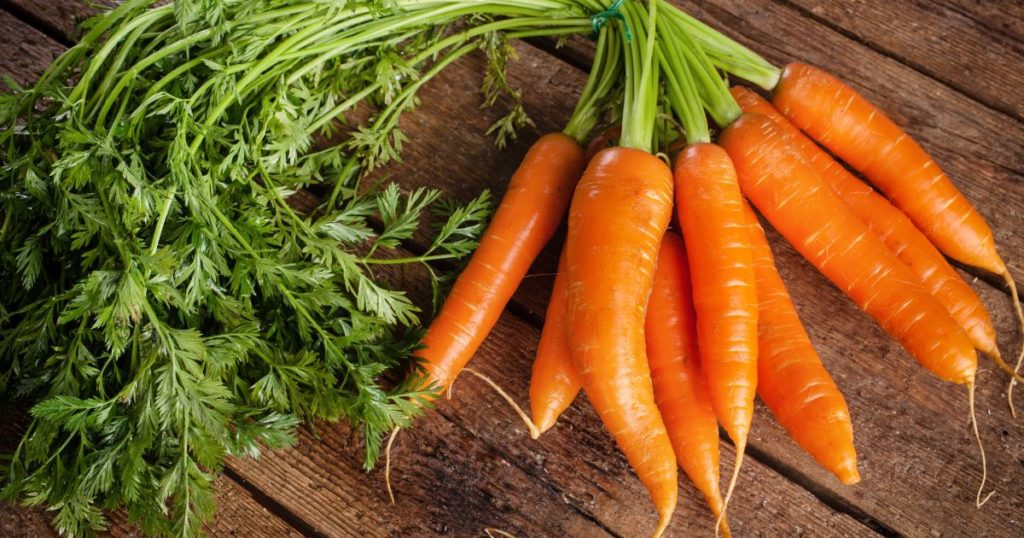
Carrot cakes (like the one in Chef Joey Prats’ class) are definitely not allowed, unless it’s a keto carrot cake like the one in Ms. Chiqui Ortiz-Dingcong’s class. But what about carrots themselves?
Well, bad news: carrots have more carbs than some other vegetables, with about 9 grams of carbs in each serving. If you’re on a keto diet and trying to keep your daily carbs under 50 grams, you’ll need to be careful about how many carrots you eat. It’s best to eat them in small amounts to stay within your carb limit.
Sweet Potato
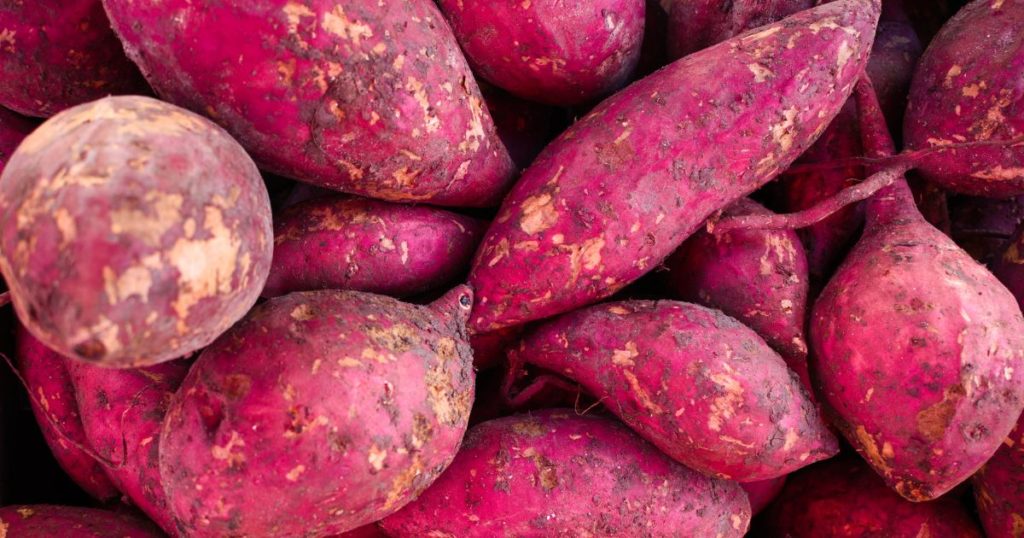
Sweet potatoes, including those turned into your favorite side dish like fries, are naturally high in carbohydrates. This (as well as other starchy vegetables) can pose a challenge for those on a keto diet, aiming for very low daily carb intake. Because of their carb content, sweet potatoes can make it harder to stay within the limits needed to maintain ketosis.
Legumes

Legumes, including soybeans, peanuts, and lentils, are a popular protein source for vegans. However, these vegetables contain high carb content. This makes it difficult to stay within the low-carb limits required to maintain ketosis and achieve the full benefits of a keto diet.
Peas

Don’t be misled by their small size—peas are high in starch, which means they’re also high in carbohydrates. Eating peas in large amounts can disrupt your meal planning and make it harder to stay within your daily carb limit. In short, it’s best to limit your intake of peas.
Onion
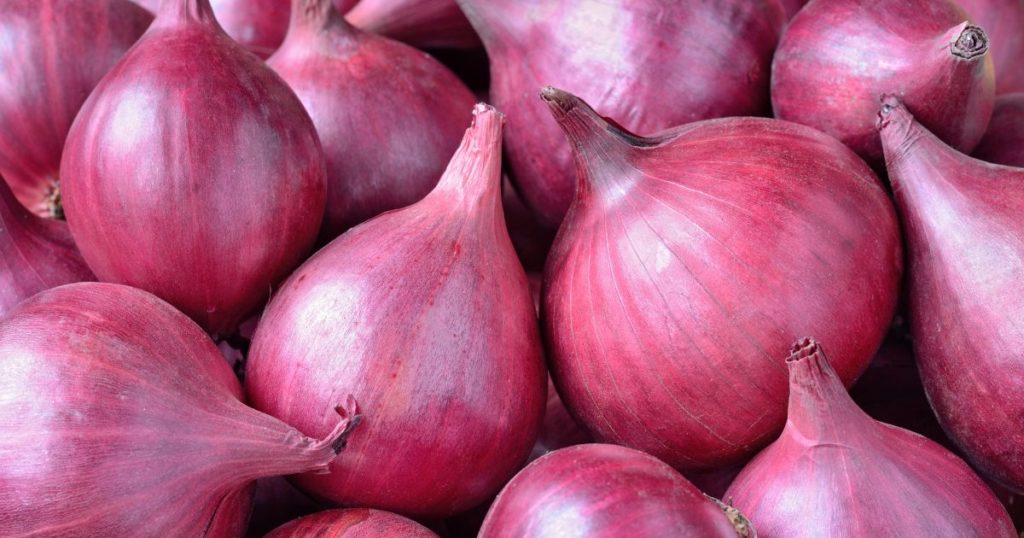
Don’t get us wrong: we at The Bailiwick Academy love onions. We even have a course all about onions! However, if you’re following a ketogenic diet, it’s important to use onions sparingly. Despite their delicious flavor and many uses, onions contain carbs that can add up quickly, making it necessary to moderate their use to stay within keto’s strict carb count.
Corn
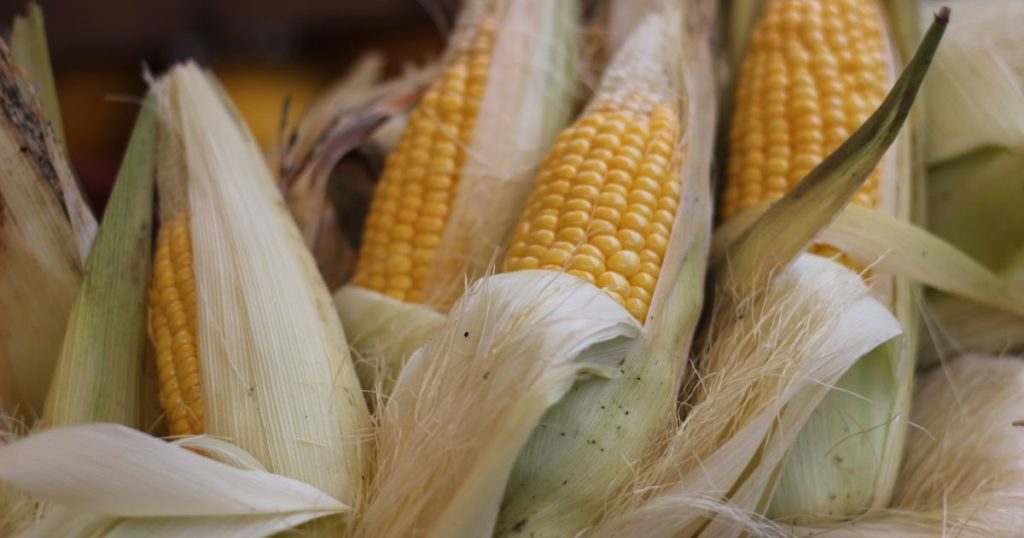
Corn is another food that might be tempting due to its sweet taste, but it’s not suitable for a ketogenic diet. It’s another vegetable high in carbohydrates, which can interfere with your efforts to maintain ketosis and achieve your weight and health goals. If you’re serious about sticking to keto, it’s best to limit or completely avoid corn.
Yam
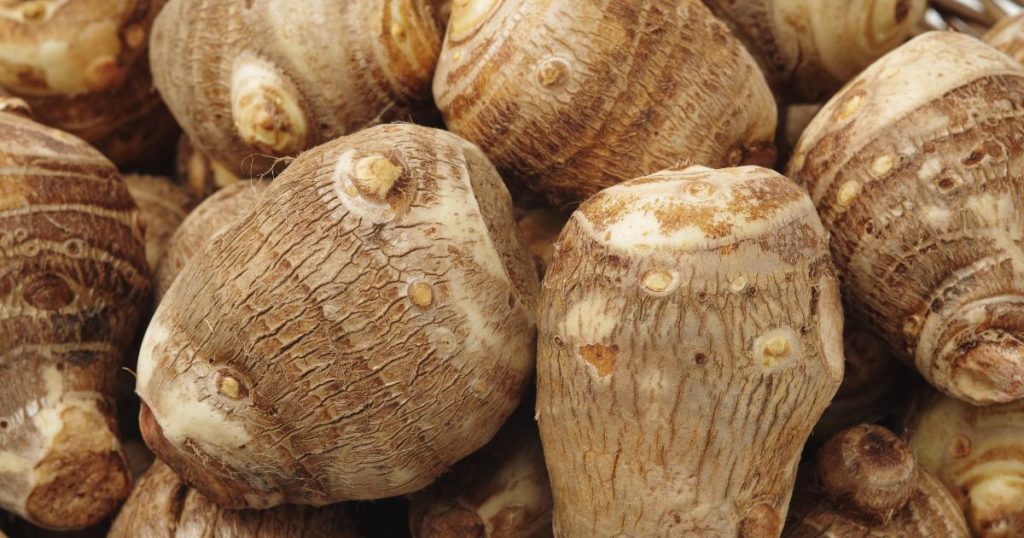
Yam is a root vegetable that packs a hefty carb count, ranging from 22 to 42 grams per serving. This is even higher than what you find in sweet potatoes. In other words, you’re not going to see yam in any type of keto meal plan.
Best Vegetables For The Keto Diet
This section is going to make you happy because it will show you which veggies are best for staying low in carbs but still getting plenty of nutrients.
Spinach

Spinach is a powerhouse of nutrients, rich in vitamins A and C, potassium, folic acid, iron, and calcium. Incorporating spinach into your diet can offer health benefits such as cancer prevention and reduced blood pressure. It’s not only beneficial for your overall well-being but also fits perfectly into a keto diet due to its low-carb content.
Bok Choy
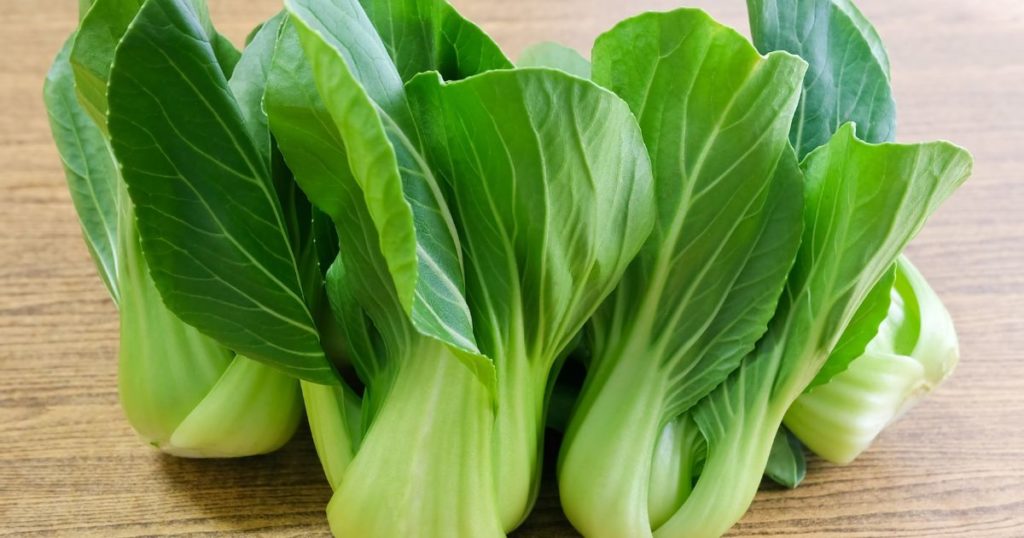
Bok choy is loaded with compounds that can help fight cancer, including vitamins C and E, beta-carotene, folate, and selenium. These nutrients not only contribute to its powerful antioxidant properties but also make bok choy a valuable addition to a keto diet, offering health benefits without adding many carbs.
Kale

Kale is a nutrient-dense leafy green that’s low in carbs and high in beneficial nutrients. It’s packed with fiber, vitamins, minerals, and antioxidants that help prevent or slow cell damage. Regularly eating kale can lower your risk of type 2 diabetes, protect against heart disease, and promote healthier bones, skin, and hair. It’s an excellent vegetable for anyone on a keto diet, contributing to overall health without compromising carb limits.
Broccoli
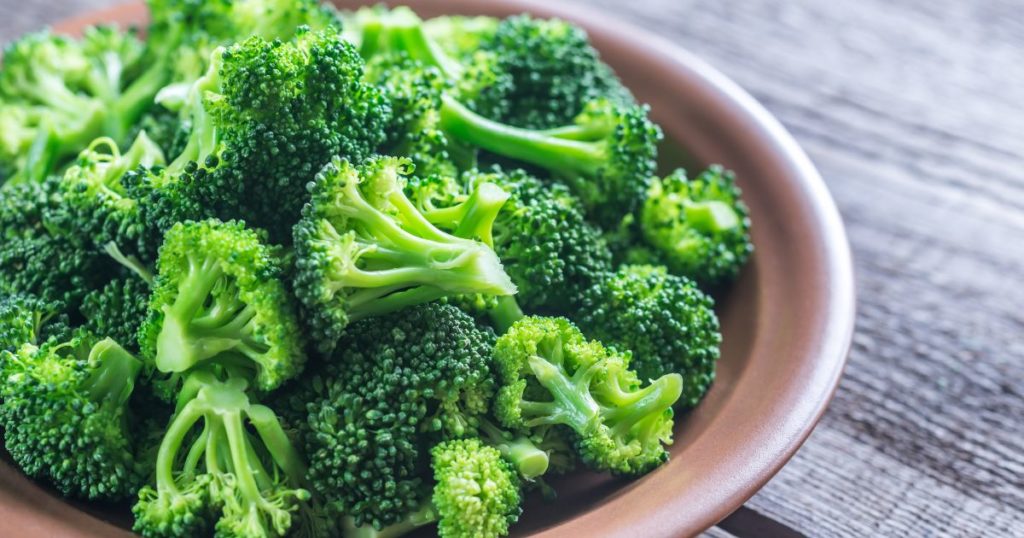
Broccoli is a versatile vegetable that can be enjoyed in various forms—raw, blanched, steamed, or roasted. It fits well in salads, side dishes, soups, pastas, and even as a rice substitute. Beyond its plenty of uses, broccoli is also a rich source of calcium, which is crucial for maintaining strong bones and preventing osteoporosis. This makes it a valuable addition to the keto diet, offering versatility and essential nutrients.
Cauliflower
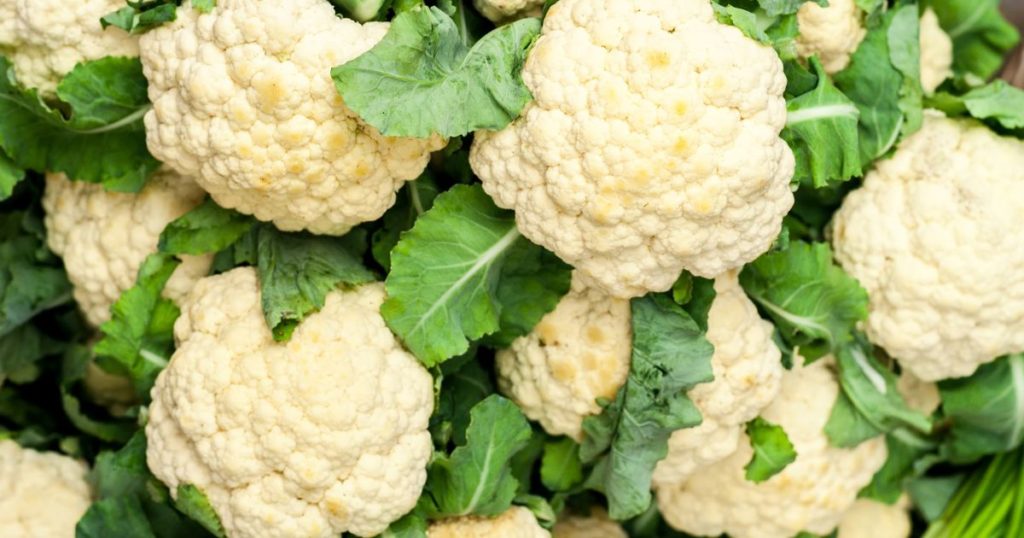
Cauliflower is a superfood that offers significant health benefits, including cancer prevention and improvements to gut and heart health. Its versatility is similar to broccoli, allowing it to be used as a rice substitute (yes, cauliflower rice is a thing!) or incorporated into various dishes. This makes cauliflower another excellent choice for those on a keto diet.
Asparagus

Asparagus might be known for its peculiar effect on the smell of urine, but its benefits far outweigh this minor quirk. It’s excellent for weight loss, helps prevent urinary tract infections, and can even boost your mood. And like all the others on this list, asparagus is a great choice for those on a keto diet.
Zucchini
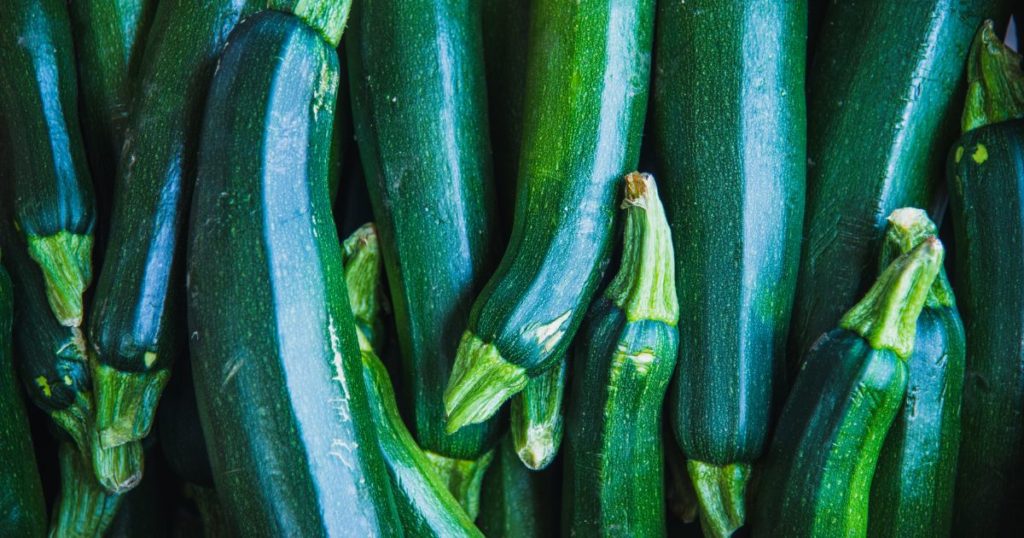
How To Ensure The Vegetables You Eat Are Keto-Diet Approved
Now you know what vegetables to eat and avoid while you’re on a keto diet. The next problem is this: what about vegetables that aren’t on this list? How can you find out which ones are, and which ones aren’t?
For instance, what if you’re eating outside? How can you make sure that what you’re eating is keto?
Well, if you really want to stick to a keto diet, it’s best that you be the one to prepare your food.
And if you want to add veggies to the usual keto food like meats, here’s a better way of preparing them: through the Keto Salad and Wraps class by Ms. Chiqui Ortiz-Dingcong!
If you’re health-conscious or eager to dive into the culinary world as an entrepreneur, this course is designed to introduce you to a range of mouthwatering, healthy dishes. Enroll now and master the art of preparing:
- Keto Tortilla
- Keto Mediterranean Salad with Chicken Souvlaki and Wrap
- Keto Mexican Salad with Beef Strips and Wrap
- Keto South Asian Prawn Salad and Wrap
And don’t worry; like all the courses at The Bailiwick Academy, this course is structured to be straightforward and accessible, making it ideal even for beginners. You’ll not only learn the basics of creating Keto Salads and Wraps but also acquire advanced culinary skills that will elevate your cooking.
Plus, this course will ensure that eating vegetables will never, ever be boring!
So what are you waiting for? Sign up now at The Bailiwick Academy! See you inside!
]]>Well, it’s a type of cuisine that’s not only delicious but also good for your health. Here in the Philippines, we often think of yummy food as being oily and greasy, but Mediterranean food is different—it’s healthier.
Curious? Keep on reading as we show you how a Mediterranean diet can change the way you think about tasty foods. Whether you’re looking to eat healthier, want to cook nutritious meals for your family, or just discover more delicious food, exploring Mediterranean food is exciting and fun!
Let’s get to it, shall we?
So… what is Mediterranean-style food, exactly?
You might be Googling right now, going, “What classifies as Mediterranean food?” Well, Mediterranean cuisine or cuisines are quite unique compared to well-known types like American, Japanese, or Chinese. It’s not tied to a specific ethnic group but is a collection of culinary practices from people around the Mediterranean Sea, including countries like Spain, France, Italy, Greece, Turkey, as well as regions in the Middle East and North Africa.
What sets Mediterranean food apart is its use of fresh ingredients and unique flavors. The diet mainly focuses on plant-based foods such as fresh vegetables, fruits, whole grains, legumes, and nuts. Olive oil is essential, serving as the main source of fat.
Additionally, fish and seafood play a big role, while red meat and dairy are less common but are still included. Herbs and spices are key for adding flavor, and there’s often a moderate consumption of wine, either red wines or white ones.
Origins of Mediterranean cuisine
The origins of Mediterranean cuisine are deeply rooted in the history of the various cultures that have lived around the Mediterranean Sea. These include ancient civilizations like the Egyptians, the above-mentioned Greeks, and Romans, who left their mark on the region’s food culture. The Mediterranean’s role as a major trading hub was crucial, as it connected Asia, Europe, and Africa, allowing for the exchange of spices and other ingredients that enriched local diets.
Significant influences also came from the Moors in Spain, who introduced ingredients such as rice, sugar, and almonds (and, totally unrelated but fun fact, also influenced arroz con pollo). Furthermore, the discovery of the Americas brought about new Mediterranean foods, including tomatoes, potatoes, and peppers, which added vibrant flavors and colors to the cuisine.
As these different cultures interacted and traded, they blended their culinary practices, creating a diverse and rich culinary tradition that spans the Mediterranean region, reflecting its historical connections and the natural bounty of its climate.
Common Elements of Mediterranean Cuisine
Now, you might be thinking that all these Mediterranean countries are different from one another, and it’s hard to memorize which country cooks what. So, to clear things up, let’s talk about the key ingredients that run through Mediterranean cuisine. Here’s what they generally share, no matter where they are in the Mediterranean region:
- Fresh, Whole Foods: Vibrant plant-based ingredients like vegetables, fruits, whole grains, nuts, and seeds dominate the menu.
- Olive Oil: This heart-healthy oil is a staple. Dishes will either be cooked in olive oil or have an olive oil drizzle.
- Herbs and Spices: The use of fresh and dried herbs like mint, basil, and thyme, along with spices such as cumin and saffron, adds depth and flavor to every meal.
- Nuts: Snack on them, toss them into salads or use them in desserts. Nuts like almonds and pistachios are everywhere.
- Whole Grains: Staples like couscous, quinoa, and bulgur wheat are common and provide a filling base for many dishes.
- Tomatoes: A key ingredient in sauces, stews, and fresh salads, tomatoes are a fundamental part of Mediterranean recipes.
- Legumes: Chickpeas, lentils, and various types of beans are crucial for adding texture and protein to meals.
- Meat and Seafood: Meats are usually grilled and seafood is abundant, reflecting the coastal lifestyle of many Mediterranean regions.
- Desserts: Sweet treats often incorporate fruits, honey, and nuts, sticking to natural sources of sweetness.
Why is Mediterranean food popular?
A simple reason why Mediterranean food is so popular is that the foods to eat here masterfully combine rich flavors, varied textures, and fresh ingredients in a way that’s deeply satisfying. It’s also easy to prepare: just toss the ingredients together, add a splash of olive oil, sprinkle some herbs and spices, and your meal is ready. It’s perfect for busy people looking for quick yet nutritious meals.
Mediterranean cuisine isn’t just tasty—it’s also good for your health. Benefits of the Mediterranean diet include lower and healthy blood sugar levels, reduced risk of heart or cardiovascular disease and Alzheimer’s, better weight loss, and improved cognitive function. In other words, the Mediterranean diet is delicious AND nutritious!
Examples of Mediterranean-style Food
Curious about what kinds of foods make up a Mediterranean diet? Check these out:
Baba Ganoush

Baba Ganoush is a creamy, smoky eggplant dip that’s a favorite in Mediterranean and Middle Eastern cuisine. It’s made by blending roasted eggplant with tahini, garlic, lemon juice, and spices. This appetizer is loved for its simple yet rich flavors and health benefits—it’s low in carbs, vegetarian, and gluten-free.
Enjoy it with veggies or pita chips, or spread it on sandwiches and wraps for a delicious taste of Mediterranean goodness.
Fun trivia: Baba Ganoush means “spoiled dad”. Who wouldn’t feel spoiled after eating this creamy, savory, and addicting dish?
Lentil Soup

Lentil soup is a hearty and nutritious choice popular in vegetarian diets. Made from lentils, which come in colors like green, brown, and red, this soup is rich in protein and fiber. The soup includes vegetables and spices like onions, carrots, garlic, and cumin, offering a comforting and flavorful meal. It’s perfect on its own or served with a slice of crusty bread.
Cucumber and Tomato Salad

Cucumber and Tomato Salad is a staple in Mediterranean cuisine, known for its simplicity and freshness. It’s mainly made with cucumbers and tomatoes, often tossed with onions, parsley, and sometimes red peppers. For an extra touch, you can add some feta cheese.
Dress up the salad with a drizzle of olive oil, a splash of vinegar, and a squeeze of lemon juice. This light and healthy salad is perfect as a side or as a complement to other dishes.
Baklava
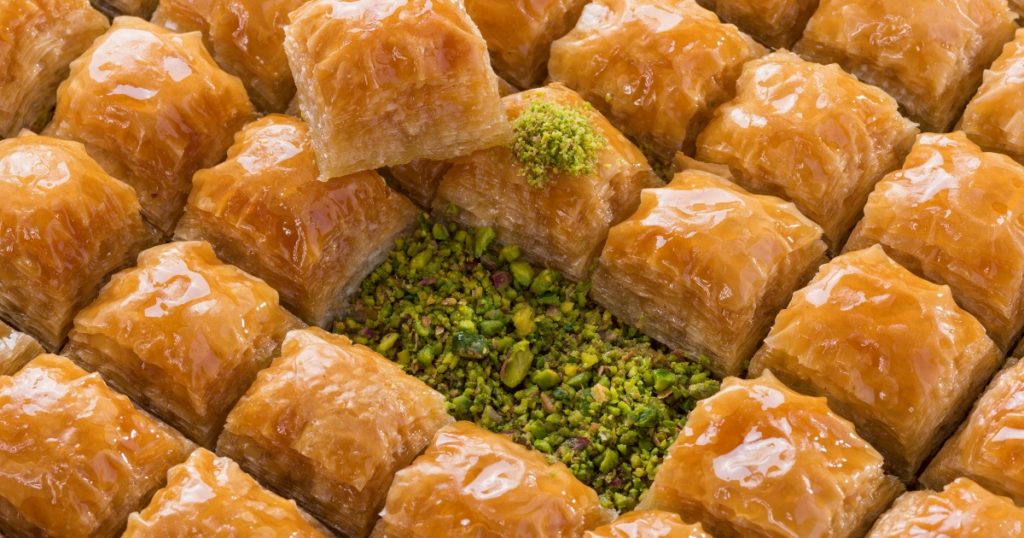
Baklava is a beloved dessert from the Mediterranean and Middle East, made with layers of thin filo pastry, filled with chopped nuts, and sweetened with syrup or honey. It’s popular in countries like Greece, Turkey, and Lebanon. The dessert varies regionally; some versions use walnuts, almonds, or pistachios, and may include spices like cinnamon or flavorings like rose water.
To make baklava, layers of phyllo dough are brushed with butter, filled with nuts, and baked until golden. After baking, a sweet syrup is poured over to soak into the layers. Baklava gets even tastier after a day, making it perfect to pair with black tea. This treat is not only delicious but also steeped in a rich history.
Here’s another fun fact: there’s so much debate about where Baklava came from. Greece and Turkey both claim it came from them, but one thing’s for sure: no one can contest that it’s one of the best desserts the Mediterranean cuisine produced.
Pita Bread

Your Mediterranean food experience will not be complete without Pita bread. This flatbread is made from a simple dough consisting of wheat flour, yeast, water, and salt. After mixing, kneading, and allowing it to rise, the dough is shaped into small balls, rolled out into thin circles, and baked at a high temperature. This process causes the bread to puff up, creating a pocket in the middle.
Pita is perfect for stuffing with fillings like falafel or vegetables and is commonly used for sandwiches and wraps. It also pairs wonderfully with dips such as hummus and baba ganoush. Whether used as a wrap or served plain as a side to various dishes, pita bread completes any Mediterranean meal.
Want to experience our class that involves pita bread? Check out Chef Max Nadin’s Pocket Bread class.
Shakshuka

Shakshuka is a vibrant one-pot dish beloved in Mediterranean cuisine, known for its poached eggs simmered in a spicy tomato sauce with onions, bell peppers, and garlic. Originating from Tunisia, where it’s called “a mixture” or “shaken,” this dish packs a punch of flavor with its fresh herbs and a drizzle of extra virgin olive oil.
It’s a versatile meal that can be enjoyed for breakfast, brunch, lunch, or dinner and is often served with bread like pita or challah for dipping into the rich, flavorful sauce. Simple to make yet rich in taste, Shakshuka proves that nutritious and delicious can indeed coexist beautifully in a single dish. Whether you stick with the classic recipe or add your own twist with different spices or vegetables, it’s a satisfying meal that’s sure to impress.
Labneh
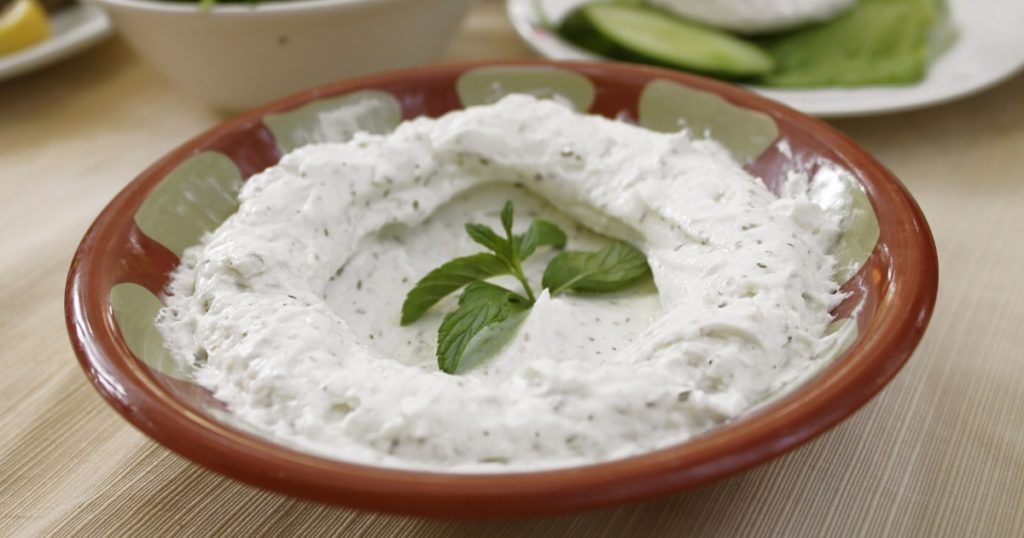
Labneh is a thick and creamy Middle Eastern yogurt dip, made simply by mixing yogurt with a little salt and straining out the whey. Often called labneh cheese due to its thick, spreadable texture, it has a tangy, rich flavor that pairs wonderfully with warm pita bread or pita chips, often drizzled with extra virgin olive oil.
You can also use labneh as a sandwich filler, or as a tasty topping on flatbreads like manaqeesh. It’s a common breakfast or snack item in Middle Eastern cuisine and can be customized with different levels of salt or marinated in oil and herbs for an extra flavor boost. Whether you call it labaneh, labne, or lebnah, it’s a versatile and delicious addition to any meal.
Want to make Mediterranean-style food at home?
Ready to try making Mediterranean-style food at home? It’s easier than you might think! That’s especially since here at The Bailiwick Academy, you can learn Mediterranean-style food recipes with Sir Rodney Martinez latest cooking class: Mediterranean Medley!
Enroll and you’ll no longer be wondering “What is a Mediterranean food menu made of,” because you’ll learn to make the following Mediterranean dishes:
- Baba Ganoush
- Labneh
- Shawarma Pita
- Hummus
- Shawarma Rice
- Falafel with Tzatziki
Just like all the the classes at The Bailiwick Academy, it’s an easy-to-follow class, perfect even if you’re a beginner. You’ll not only learn the basics of Mediterranean cuisine but also gain skills that go beyond the basics—once you’re done, you might be on your way to starting a Mediterranean food business!
So what are you waiting for? Sign up at The Bailiwick Academy and start your journey to mastering the art of Mediterranean cooking, exploring vibrant flavors and healthy recipes right from your own kitchen.
—
Keep coming back to The Bailiwick Academy blog for more cooking and baking tips, kitchen tricks, and much more!
]]>And that’s what this article is going to talk about: some of the various Filipino longganisa types. Whether you’re a food enthusiast or a home cook looking to expand your culinary repertoire, understanding the vast array of longganisa varieties across the Philippines is a journey worth taking.
Get ready to enjoy the many delicious flavors of this popular Filipino breakfast staple!
Longganisa Pinoy Variety 1: Chorizo de Cebu

Chorizo de Cebu, also known as longganisa de Cebu, is a beloved pork sausage from the Cebu region. You’ll know it by its sweet, spicy, and garlicky flavor profile. This longganisa hamonado-type stands out with its vibrant red color from achuete seeds and distinctive spherical shape.
Made from a mix of lean pork, pork fat, salt, pepper, sugar, anise liqueur, paprika, garlic, and chilis, it’s encased in hog casings but can also be prepared without them. You typically enjoy this Filipino fried or grilled alongside white or garlic rice, or with puso—a traditional rice wrapped in palm leaves. It’s a versatile and flavorful addition to any Filipino breakfast table.
Longganisa Pinoy Variety 2: Longganisa ng Lucban

Longganisa ng Lucban is a distinctive Filipino sausage from the town of Lucban in Quezon province, celebrated for its unique garlicky and sour profile. Unlike the more common sweet varieties of longganisa, makers infuse this Filipino longganisa dish with a blend of Mediterranean spices like oregano and smoked paprika, alongside a generous amount of garlic and vinegar.
Aside from the ingredients mentioned above, you usually make this with lean pork, pork fat, coarse salt, sugar, and vinegar, and wrap it in a thick casing, although it can also be enjoyed without the casing. Traditionally served with fried rice and atchara (a Filipino pickled dish), it pairs exceptionally well with Pancit Habhab, another noodle dish that originated from the Quezon province. This sausage’s preparation involves curing the meat mixture in casings, highlighting its robust flavor that’s best savored as a hearty breakfast or a savory snack.
Longganisa Pinoy Variety 3: Vigan Longganisa
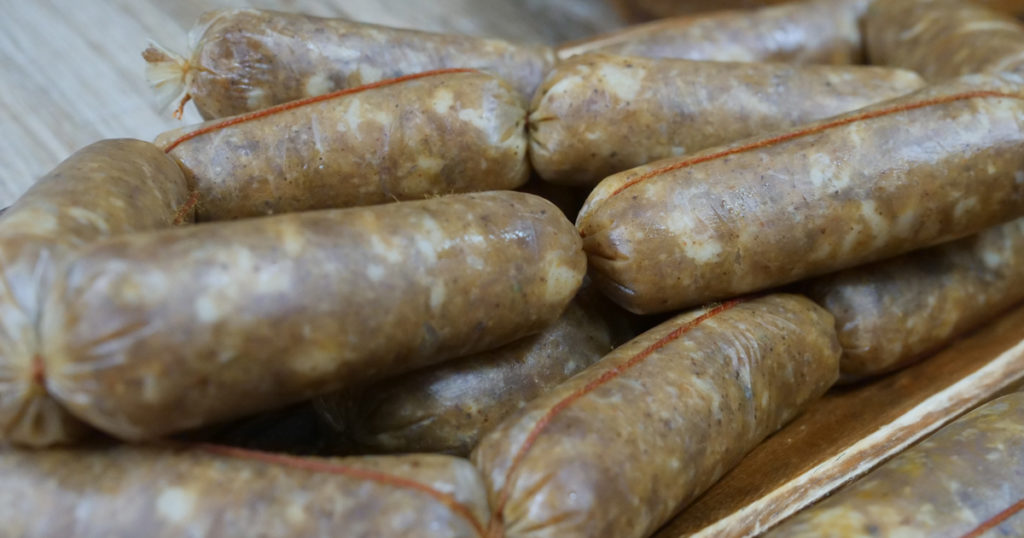
Vigan Longganisa originates from the Ilocos region. When you make them, you hang the sausages under direct sunlight for 4-6 hours to drip dry the fat and excess liquid, then pan-fry them until brown. This method, akin to the traditional smoking over an earthen stove, imbues the Vigan longganisa with a distinct smoky flavor, enhancing its sourness.
Eat it with Ilocos vinegar for an added zing. Have it for breakfast with some garlic rice, tomatoes, and a fried egg for a savory and tangy start to the day!
Longganisa Pinoy Variety 4: Alaminos Longganisa
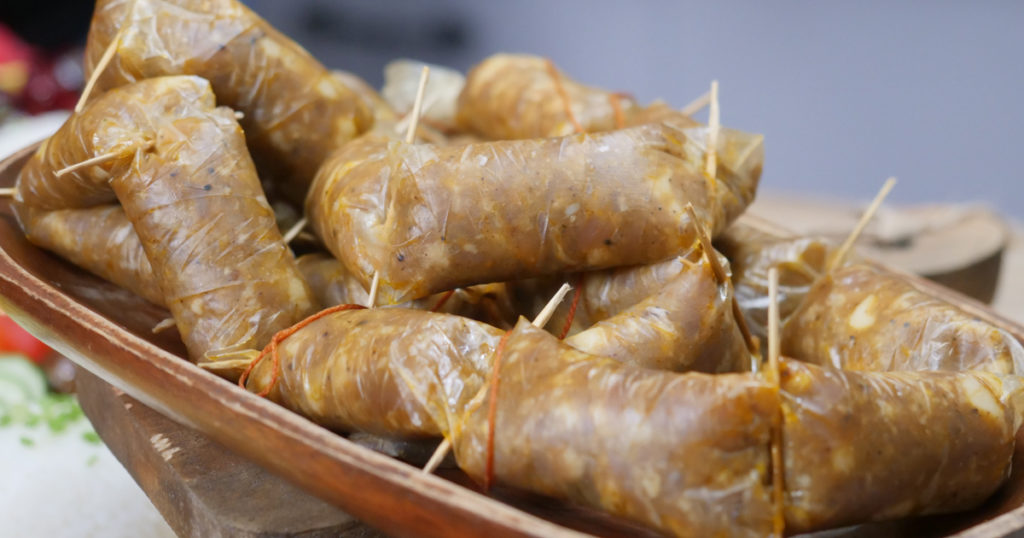
Alaminos Longganisa hails from Pangasinan. It is the perfect little treat for anyone who wants mild flavors and cute, bite-sized portions of food. Aside from it being slightly sweet and having the right touch of garlic, it also has a distinct look.
Instead of the usual twist or string tying these sausages together, makers connect them with little sticks called “buli,” making each string of Alaminos Longganisa look absolutely unique. It’s the kind of detail that adds a dash of fun to your cooking and might even get the kids interested in what’s on their plate.
Oh and a fun fact? Alaminos Longganisa is a star in its own right, celebrated every year at the Longganisa Festival. So, when you bring these Filipino sausages into your kitchen, you’re not just cooking up a meal; you’re whipping up a piece of cultural pride!
Longganisa Pinoy Variety 5: Imus Garlic Longganisa

Imus Garlic Longganisa, from Cavite, is one of those Filipino recipes that is a dream come true for garlic enthusiasts. It’s packed with a punch of garlic flavor and has a very bold taste. It’s a recado longganisa, after all. It’s a straightforward recipe that delivers: just combine ground pork, plenty of garlic, soy sauce, vinegar, black pepper, and a touch of achuete seeds for color, and you’re good to go!
You can choose to encase it in hog casing or go for a skinless longganisa variant, depending on your preference.
Longganisa Pinoy Variety 6: Pampanga Hamonado Longganisa
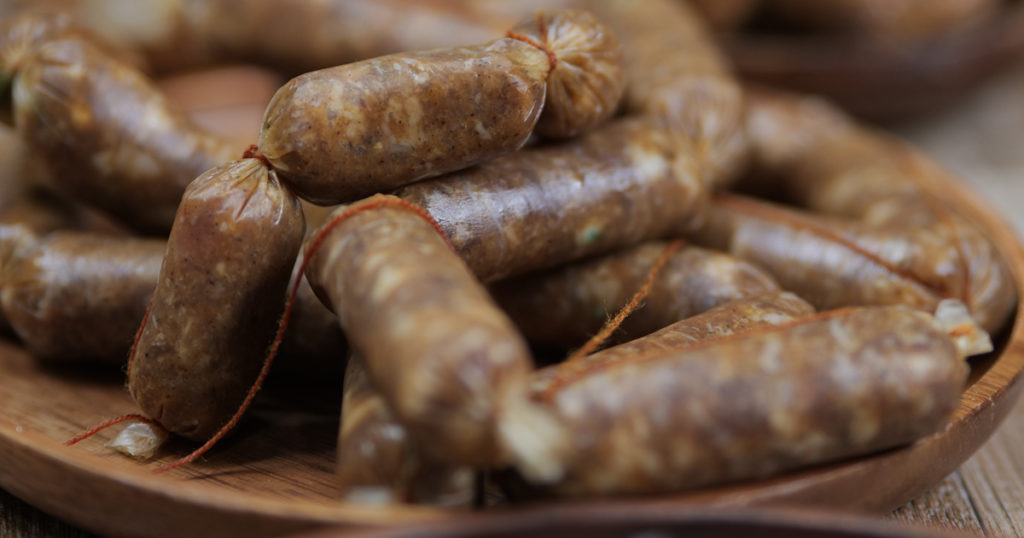
Pampanga Hamonado Longganisa brings a sweet and juicy option to the table. This delightful sausage is known for its rich, hamlike taste that comes from being marinated in pineapple juice. It also has a distinct appearance; while makers often color it orange or red with achuete seeds or annatto powder, the usual longganisa look, this longganisa variant is typically longer and thinner.
Unlike other Philippine sausages that may lean towards the garlicky or spicy, Hamonado is a Filipino sweet sausage, making it a hit for those who prefer this flavor for breakfast. The mixture of ground pork, garlic, brown sugar, black pepper, coarse salt, and a hint of vinegar creates a flavor profile that’s both comforting and satisfying.
Longganisa Pinoy Variety 7: Calumpit Longganisa

Calumpit Longganisa, hailing from Bulacan, Philippines, is known locally as longganisang bawang. This other recado variety in this list is crafted from a mix of lean ground pork, pork fat, and a generous helping of garlic, along with bay leaves, brown sugar, soy sauce, vinegar, salt, and black pepper. Typically, you boil this Filipino longanisa before frying it to achieve the perfect level of doneness, allowing its flavors to fully develop.
Calumpit Longganisa comes in original garlic, spicy garlic, and sweet and spicy varieties. The flavors cater to different tastes – whether you want something traditional or spicy to start your day. With its garlicky profile and touch of sweetness or heat, Calumpit Longganisa offers delicious options to actively customize your experience.
Want to learn a Pinoy longganisa recipe?
Want to start making your own longganisa after reading all about it? Looking to try the diverse longganisa varieties?
Well, you don’t have to go far. Just enroll in Chef Chona Garcia-Laureta’s latest class here at The Bailiwick Academy: Philippines’ Regional Longganisa!
It’s an easy-to-follow class, perfect even if you’re a beginner at making these. And at the end, not only will you be able to make a delicious longganisa Filipino breakfast, you might find yourself posting Filipino longganisa for sale in your social media accounts.
After all, who wouldn’t be attracted to not having to travel to taste their favorite longganisa variants, right? It makes for a pretty good food business!
So what are you waiting for? Sign up at The Bailiwick Academy and start your journey to being one of—if not the best longganisa supplier—in the Philippines and all over the world, today!
—
Keep coming back to The Bailiwick Academy blog for more baking and cooking tips, kitchen tricks, and much more!
]]>I hope you get inspired by them!
Why Catering Is A Big Opportunity in 2024
2024 is shaping up to be a great year for starting a catering business. What makes me say this, you ask?
- There are already projections of more business meetings and corporate events this year. And if you remember one of my tips for standing out as a catering business, it’s to close plenty of corporate clients. 2024 makes it super possible to succeed in catering.
- There are always weddings here in the Philippines. For example, according to the Philippine Statistics Authority (PSA), the number of people who got married increased from 2019 to 2022. I’m pretty sure the same thing happened in 2023, and will happen in 2024!
- And of course, Filipinos love to party and celebrate special occasions such as baptisms or birthdays. And with celebrations always come food, which means more catering opportunities success—and income!
Those three are more than enough reasons, wouldn’t you agree?
How To Really Succeed In Catering
Are you now really, REALLY encouraged to try your hand at catering this 2024? I hope so, especially if you’ve been dreaming of coming up with a cooking and baking empire for a long time already!
Now, how exactly do you go about it? Sure, I gave you seven tips to get started on a catering business… but I feel like the best way to really find out is to check out some of the best caterers in the Philippines!
I did a quick search, found this list, and this list, and found some commonalities of what makes them great, according to the lists:
- Delicious food of different cuisines
- Great service
- Beautiful setups
- An overall amazing experience
But here’s the thing: knowing what makes a great caterer and actually implementing these things are two different sides of the coin.
Besides, even if you know, how can you be sure that you can apply the knowledge and actually achieve catering greatness?
Well, that’s where Catering 101 of The Bailiwick Academy comes in!
Succeed in Catering in 2024 With Catering 101
Our Catering 101 course is like a training camp for caterers, perfect for enthusiastic home cooks like you.
You’ll pick up skills to make your catering business really stand out. This includes learning effective marketing, creating a memorable menu, and setting the right prices to ensure good profits.
We’ll show you how to smoothly handle tough situations and demanding customers. Plus, you’ll learn ways to make such a great impression that your customers will be eager to return.
This course is filled with tips and tricks from some of the Philippines’ top caterers and chefs.
By the end of it, you’ll be ready to handle big events, lead a great team, and have the know-how to expand your catering business.
Who will be teaching Catering 101?
We were on the lookout for caterers who could help us make this class really comprehensive… and we’re lucky that we already have onboard Chef Him Uy De Baron!
Chef Him is hailed as one of the biggest names in the culinary world, Chef Him runs various restaurants all over the Philippines and is one of the instructors inside The Bailiwick Academy since 2022.
Check out the preview of this class here:
But it’s not just Chef Him. Meet the others:
- Beejay Tantoco, who runs his family catering business Tantoco’s Catering (established in 1994) where they close government accounts, serve celebrities, and entered popular food markets like Mercato and Bancheto.
- Chef Kalel Chan, a corporate chef of Raintree Restaurants which operates 10 restaurants — Farmer’s table, Saboten, Cha Cha’s Boracay, The Coconut Club, Izakaya Sensu, My Country House, Jones All Day, and so much more. He’s famous for The Original Ube Champorado!
- Aileen Ferrer, a Bailiwicker, our community manager of the TBA Student Lounge, and a businesswoman who runs “Unwrapped – Flowers, Hampers and Events” — a flourishing floral and event styling company that works with corporate clients, weddings, and various events.
- Michelle Lazaro, another Bailiwicker who runs Balai Calamba, a catering business based in Laguna. She also owns two commercial kitchens strategically located in Las Piñas and Laguna. She has catered for corporate events of Hyundai, Chery, and Foton.
- We also have a mystery chef! He has been in the food business for almost 20 years. His experience includes working for Nestle as a Regional Chef Consultant, running a Catering Business since 2004, and starting a new food business last 2022. You’ll find out who he is when you join the program!
How Catering 101 Will Go
Catering 101 starts on January 28, 2024, and will be broken up into six strategic modules to help you succeed in catering.
Week 1: Laying the Foundations For a Successful Catering Success
This week, you’ll dive into the essentials of starting a catering business. This includes understanding the market, the diverse roles in catering, and what initial capital you’ll need. You’ll also learn about building a strong team, crucial for a successful operation.
- Discover the catering market opportunities, especially in the Philippine context.
- Learn directly from industry experts about starting a catering business, covering everything from capital needs to logistics.
- Understand the various roles you’ll play, from chef to business strategist.
- Get a detailed breakdown of initial capital requirements for budget planning.
- Learn how to assemble a strong team, including roles like event managers and chefs.
- Gain real-world insights from successful caterers on launching and growing your business in the Philippines.
- Balance your passion for food with the skills needed for running a successful business.
Week #2: Crafting a Unique Brand that Makes Sales and Marketing Simple
Week 2 focuses on branding, sales, and marketing in the catering industry. You’ll learn how to differentiate your business in a competitive market and make an impact.
- Understand the different catering types and their unique needs.
- Learn how to evaluate your competition and identify your unique selling points.
- Gain insights from real-life examples on effective brand positioning.
- Learn how to engage potential clients with compelling sales pitches.
- Create a targeted marketing plan and schedule.
- Learn the steps for testing your business concept before a full-scale launch.
- Understand the importance of maintaining good relationships in corporate catering.
Week #3: Create Irresistible Menus and Aesthetically-Pleasing Meals Like a Catering Pro
In Week 3, you’ll delve into menu planning and food presentation, learning how to create menus that are both delicious and practical for catering.
- Explore various menu styles and learn how to select the best for different events.
- Learn recipe selection that’s both tasty and catering-friendly.
- Understand the challenges of catering food, including logistics and quality maintenance.
- Acquire skills in food presentation to enhance event dining experiences.
- Learn essential food safety practices.
- Manage supplies effectively and build strong supplier relationships.
- Get advice on setting up an efficient off-site kitchen.
Week #4: Costing and Pricing Best Practices to Maximize Profits
This week is all about the financial side of catering, focusing on recipe costing, pricing strategies, and understanding overhead costs.
- Learn to cost recipes accurately and understand their financial impact.
- Develop effective pricing strategies that reflect your service’s value.
- Understand the overhead costs involved in catering.
- Design profitable and appealing menus.
- Develop financial management skills for long-term success.
- Balance cost-effectiveness with high-quality offerings.
- Adapt pricing strategies to market dynamics and customer expectations.
Week #5: Master the Essentials of Booking, Service, and Crisis Management
The fifth week covers the practical aspects of managing catering events, from booking to service standards and crisis management.
- Learn the comprehensive process of booking events.
- Master creating a BEO for outlining event details.
- Develop a culture of excellent service in your team.
- Handle crises and difficult clients professionally.
- Follow up with clients post-event for feedback and repeat business.
- Use successful events as marketing tools while respecting client privacy.
Week #6: The Essentials of Table Styling for Every Occasion
In the final week, you’ll learn the art of table styling, ensuring your setups are as memorable as your food.
- Learn to set up buffet and dining tables for various events.
- Choose the right serving and dinnerware to enhance the dining experience.
- Discover flower arrangement tips for stunning table displays.
- Customize table setups for different themes.
- Receive step-by-step instructions for flawless table presentations.
By the end of these six weeks, you’ll have a comprehensive understanding of starting and running a successful catering business, equipped with practical skills and insider knowledge!
How To Enroll In Catering 101
It’s easy! All you have to do is sign up at The Bailiwick Academy then go over to the Catering 101 Page. Enroll, and then make sure to block off January 28, 2024, as that’s the first day of class!
Final Thoughts About How To Succeed in Catering in 2024
Looking ahead to 2024, it’s clear that there’s a big chance for success in the catering business. With more companies holding events, lots of weddings, and Filipinos loving big celebrations, there’s plenty of work for caterers.
To really do well in catering, you need to mix your love for cooking with smart business skills. That’s where our Catering 101 course at The Bailiwick Academy comes in. It teaches you everything from understanding what customers want to making your catering stand out, to handling money matters.
You’ll learn from experts like Chef Him Uy De Baron, who know all about making great food and running a successful business. They’ll share their secrets on how to make your catering unforgettable and how to handle any tough situations that come up.
Don’t miss this opportunity to turn your passion into a profitable venture! Become one of the Bailiwickers trained by successful food business owners on how to launch a catering business in 2024.
Join Catering 101 today. See you inside!
—
Keep coming back to The Bailiwick Academy blog for more baking and cooking tips, kitchen tricks, and much more!
]]>Well, read on to ensure that as much as possible, it’s your name—and your menu—on everyone’s lips!
Catering Tips 1 of 5: Close Corporate Catering Clients—And Stay Friends With Them!
Out of the many catering tips for your next corporate event, here’s one to keep in mind. Why? Well:
- Corporate clients often host multiple events throughout the year, providing a steady stream of opportunities. Research corporate events and you’ll find plenty of variations: team buildings, awarding ceremonies, recognitions, Christmas parties, and so on. Imagine being able to cater for all those!
- Satisfied corporate clients are likely to recommend your services to other businesses and colleagues.
- Corporate events often have larger budgets, allowing for more creative and expansive catering options. Of course, they may have higher expectations as well, but I’m sure you’re more than able to meet that challenge!
- Catering for corporate events can increase your brand’s visibility among a wider, professional audience. That’s especially true since these events are great for networking, potentially leading to more business and partnerships. Of course, this means you need a team to do everything for you while you network and shake hands—don’t forget this part!
At the end of the day, you need leads and returning clients to survive—money, after all, is the lifeblood of all businesses. Corporate clients help you achieve that. By nurturing strong relationships with them, you’re doing more than just catering – you’re creating a supportive network for your business.
Catering Tips 2 of 5: Specialize In A Catering Style
If you read Chef Joey Prats’ spotlight in this blog, you’d know that one of the things he advocates for is focusing on one product. That way, you can go all in on creating the product and becoming known for it.
Well, guess what? You can apply the same concept to your catering. Specializing in a particular style or type of cuisine can set you apart from competitors.
Whether it’s gourmet, vegan, local cuisine, or themed events, having a niche makes your service unique and memorable. By specializing in a certain type of food or style, like gourmet, vegan, or local dishes, you become the go-to person for that special kind of catering. It’s a great way to draw in customers who want exactly what you offer and to build a name for yourself as the expert in your chosen area.
Catering Tips 3 of 5: Develop “Travel-Friendly” Food Selections And Solutions
One challenge when it comes to preparing food ahead of time is transportation. No one wants their beautifully prepared dishes to turn into a messy, unappetizing heap during the journey, agree? That’s why developing a menu with “travel-friendly” food selections is so important.
Here’s how to ensure your dishes remain appealing and delicious, even on the go:
- Opt for foods that can withstand travel to the event space without losing their appeal. Baked goods, casseroles, and sturdy salads are great choices.
- Select items that stay fresh at room temperature or can be easily reheated without compromising quality.
- Food safety is important! Use containers that protect the food, maintain food temperature (both hot and cold), and prevent cross-contamination and spills or messes during transport.
- Conduct trial runs to see how dishes fare during transport to the event space, adjusting recipes or packaging as needed.
- Ensure that the food still looks appetizing upon arrival, considering factors like sauce separation or garnish displacement.
- Design dishes that are easy to plate quickly and attractively at the event location, minimizing on-site prep work.
Remember, in catering, how your food travels is just as important as how it tastes! Considering these factors ensures that your food is always served at its best, leaving a lasting impression on your clients and their guests.
Catering Tips 4 of 5: Create Crisis Management Protocols
According to cvent, there are different types of caterers: front-facing caterers who help with setup and guest relations; catering chefs who stay in the kitchen; and catering managers who oversee the entire catering team of servers and cooks.
However, as the business owner, whether you prefer front-facing catering or staying in the kitchen as the catering chef, you’ll have to be prepared for any crisis that may arise. And yes, in the catering business, unexpected situations are bound to arise!
Here’s how you can create effective crisis management protocols to save the day:
- Understand the types of emergencies that could occur, such as food shortages, equipment malfunctions, or staffing issues.
- For each potential crisis, have a clear plan of action. This might include backup suppliers, extra equipment, or a pool of on-call staff.
- Ensure every team member knows their role in a crisis. Regular training sessions can help keep everyone prepared and confident.
- Establish clear lines of communication for quick and effective coordination during a crisis.
- Of course, don’t forget that as your business grows and changes, so should your crisis management plans. Regularly review and update them to ensure they remain effective.
By having solid crisis management protocols in place and being prepared for the unexpected, you show professionalism and can significantly enhance your reputation in the industry.
Catering Tips 5 of 5: Catering A+++ After Service
Out of all the catering tips here, this might be the most important.
You know what pro caterers do when they’re done with the event? They don’t just pack up and leave! They make sure that they have excellent after-service.
Here’s why and how to excel in after-service:
- Reach out to your clients to ask for their feedback. This shows that you care about their experience and are always looking to improve. Constructive feedback is invaluable for refining your service and menu.
- A simple thank you note or call to your clients can go a long way. It demonstrates your appreciation for their business and helps in building a lasting relationship.
- Use the follow-up as an opportunity to discuss future events. Inquire about any upcoming events they might be planning and how you can be a part of them. This proactive approach can secure future bookings.
- If your clients are happy with your service, ask them to refer you to others. Word-of-mouth is a powerful tool in the catering industry, and satisfied clients are often your best advocates. Try getting them on video talking about their experience with your company.
- Keep your clients in the loop about your new services, menus, or special offers. Regular, non-intrusive communication keeps you at the forefront of their minds for future catering needs.
- If a client has any complaints, address them promptly and professionally. How you handle issues can sometimes leave a more lasting impression than the service itself. Be as nice and graceful as possible, and remember that most people aren’t trying to be difficult; they just want someone to listen to them and give them a solution to their problem.
Final Thoughts
In wrapping up, these five catering tips are your roadmap to not just surviving but thriving in the competitive world of catering. By implementing these tips, you’re setting yourself up for success and longevity in the catering business. Remember, it’s not just about serving great food; it’s about creating an entire experience that resonates with your clients.
Ready to start your catering business but you don’t know where to start? Watch for my next blog post. I’ll be featuring some successful caterers, what they did, and how you can copy some of their methods to start a catering business of your own this 2024!
And before I go, I’d just like to remind you: don’t forget to sign up at The Bailiwick Academy for recipes you can use in any catering event!
—
Keep coming back to The Bailiwick Academy blog for more baking and cooking tips, kitchen tricks, and much more!
]]>Keep on reading as I walk you through these key processes to get your home-based catering business off the ground.
1st Step For Starting A Catering Business: Conduct Thorough Market Research
The first step in starting your catering business is to really get to know your market. This includes doing the following:
- Figuring out who would want your catering services and what kind of food they like. Are people in your area into fancy wedding banquets, or do they prefer casual birthday parties, or is there a demand for vegan and/or gluten-free menus?
- Think about the prices people are willing to pay and what times of the year get really busy with events. This part of the job might involve some online research, talking to people, and maybe even checking out different types of events to see what’s popular. Getting this step right sets you up to create a business that really fits into your community and stands out from the competition.
Understanding what people around you want and what other catering businesses are offering (or not offering) can help you find your own special spot in the catering world.
What happens if you skip market research?
Not doing market research when you start your catering business is like trying to hit a target while blindfolded. This means you might make a menu that doesn’t fit what people in your area are looking for. For example, you could end up offering fancy, expensive dishes in a place where people prefer simple, affordable food, or the other way around.
Also, you might set your prices too high and scare customers away, or too low and not make enough money. Plus, you could miss out on finding a special service or dish that nobody else is offering to any potential client. In short, skipping market research can lead to making bad choices for your business, wasting time and money, and having a hard time getting and keeping customers.
2nd Step For Starting A Catering Business: Develop a Solid Business Plan
After you’ve got a good handle on the market, the next big step is to make a solid business plan. Make sure it includes the following:
- How much you’ll charge for your services, who you want to cater to (like weddings, parties, or corporate events), and how you’ll let people know about your business.
- How much it’ll cost to start your business, keep it running, and make a profit.
Having a clear business plan helps you stay focused and organized. Plus, if you ever need to make business loans or get investors, it’s ideal to have a plan that shows how making an investment in you is a good idea!
What if you start running your business without a plan?
Sure, you can start your catering business without a plan, but there’s a good chance things won’t turn out right. Without a business plan, you might experience these:
- Spending money too fast
- Finding yourself in situations where you’re not prepared, like a big event that you don’t have enough staff or supplies for.
- A hard time tracking goals and progress—you might not know if you’re making enough money to cover your costs or if you’re charging the right prices.
In short, without a plan as a basis or something to fall back on, you’re going to make things riskier and stressful for yourself.
3rd Step For Starting A Catering Business: Get the Necessary Licensing and Permits
This particular step is important because you want to be a legitimate and legal business entity, even if you’re just operating out of your own kitchen space. That means making sure you have all the right licenses and permits. Depending on where you live, you’ll need different kinds of permits, like a food handler’s license, a health department permit, and maybe a general business license.
Getting these licenses might seem like a lot of paperwork and maybe a bit of a hassle, especially when you just want to start a catering business in the Philippines, but trust me. It’s worth it for your own peace of mind and for customers to trust that they’re eating food that’s safe and prepared in a clean environment.
What are the consequences of skipping this step?
If you don’t go through the proper steps and channels, you could get into legal trouble, which can mean fines or even having to shut down your business. Additionally, operating without the necessary permits can damage your reputation. If word gets out that you’re not properly licensed, it can be really hard to build trust with potential clients and make it difficult for your catering operation to grow and succeed.
4th Step For Starting A Catering Business: Create a Memorable Brand and Marketing Strategy
A good marketing strategy gets your name out there and brings in customers. Do the following to accomplish this:
- Think about what makes your cooking or your service special and use that to build your brand.
- Your brand is what makes you different from all the other catering companies out there, so make sure it’s memorable—come up with a catchy name, a logo, and even a unique color scheme.
- Don’t just stop at having a brand—you need to let people know about it via a marketing strategy. You can use social media, like Facebook or Instagram, to show off your food and tell people about your services.
- You could also make a website, hand out flyers at events, or team up with local event planners.
What if you don’t take the time to make a brand and strategize your marketing?
If you don’t invest time in building your brand or your marketing strategy, you’ll struggle to stand out in the competitive catering industry, making it hard to attract and retain customers. Without a way to spread the word about your services, many potential clients won’t even know your business exists. This lack of visibility can lead to fewer bookings and limited growth opportunities.
5th Step For Starting A Catering Business: Plan Your Menu Carefully
Since you are running a food business, it’s super important to think about what types of food you’re going to offer. Here are some things to keep in mind.
- Your menu is like your business card—it shows off what you can do. Make sure it has a good mix of different kinds of dishes so you can please all sorts of customers.
- As mentioned above, include things for people who might be vegetarian, or who don’t eat gluten, so everyone has something they can enjoy.
- Think about how much the ingredients cost and how long each dish takes to make. You want a menu that’s not just tasty but also doesn’t cost too much to make or take too long to prepare.
Can’t I just offer whatever food people look for?
There’s always the temptation to offer a wide range of foods that people are looking for, but it’s not always the best idea. Why?
- If you try to make too many different kinds of food, you might need lots of different ingredients and a lot of time to prepare everything. You’ll end up overexerting yourself which can affect the quality of your service and your food.
- As Chef Joey Prats says in this feature, it’s better to focus on a few things. This way, you can make sure the quality is always top-notch, and you won’t get overwhelmed. Plus, having a speciality can make your catering business stand out from others.
6th Step For Starting A Catering Business: Invest in Quality Equipment and Supplies
The sixth step is to make sure you have the right tools and supplies for your catering operations. This means:
- Getting things like reliable stoves, sharp knives, and sturdy pots, pans, and chafing dishes.
- Think about what you need for serving the food, like trays, dishes, and utensils.
- Note that it’s worth spending a bit more on these because they’ll help you cook better and faster, and they’ll last longer.
- Find some trustworthy suppliers who can give you fresh and high-quality ingredients. Having good supplies means your food will taste better, and that’s what will make your customers happy.
Can’t I save up by just spending on less-than-quality equipment?
You might think you’re saving money upfront by buying cheaper, lower-quality equipment, but it can actually cost you more in the long run:
- Low-quality equipment often breaks down more easily and doesn’t perform as well.
- You might end up with food that’s not cooked properly or you could face delays in your service as your business grows.
- This can disappoint your customers and hurt your business’s reputation.
- You’ll also likely have to replace or repair cheap equipment more often, which adds up over time.
Investing in good-quality equipment is a smarter move because it’s more reliable, lasts longer, and helps you maintain a high standard of service.
7th Step For Starting A Catering Business: Hire and Train a Skilled Team
If you want your catering business to last, you’ll have to admit to yourself that you’ll need a team. Even if you’re great at cooking, you can’t do everything alone, especially as more orders come in. You’ll need chefs, servers, and maybe even a person to help with cleaning or deliveries.
Look for people who are not only good at their jobs but also friendly and professional because they represent your business. Once you’ve got your team, it’s important to train them well. Make sure they know how to prepare and serve food the way you want, and that they understand the importance of customer service.
Is hiring and training a team really necessary?
Like I said earlier, you can’t do everything yourself. A well-trained team can make a huge difference in how smoothly your events go and how happy your customers are. They can help you handle bigger jobs and make sure everything runs on time.
Plus, having a team allows you to focus on the parts of the business where you excel, like creating menus or networking with clients, while they handle the day-to-day tasks. It also means you can take on more events and grow your business faster.
Final Thoughts
Starting a catering business, especially from home, is an exciting journey filled with opportunities and challenges. But by following these seven steps, you’ll be well on your way to launching a successful catering business in 2024.
Of course, I’d want to help make you even more successful. That’s why you should watch for my next blog post, where I’ll talk about simple hacks to get more business and referrals as a startup catering business. These tips will be invaluable in expanding your client base and enhancing your brand’s reach.
Stay tuned! And while you’re here, don’t forget to sign up at The Bailiwick Academy to access courses that will inspire and expand your future catering menu options!
—
Keep coming back to The Bailiwick Academy blog for more baking and cooking tips, kitchen tricks, and much more!
Not to worry! If you’re curious about this iconic dessert, you’ll be happy to hear that this article will dive into the world of fruit cakes and discover why it has become synonymous with a Christmas menu.
Let’s get started, shall we?
So…what is a fruit cake?
What are fruit cakes, indeed? At its core, a fruit cake is a rich, dense cake packed with dried or candied fruits, nuts, and spices. The ingredients are often soaked in spirits like brandy or rum, which not only adds a depth of flavor but also acts as a preservative.
The cake is typically made well in advance of Christmas, allowing it to mature and develop its complex flavors. A fruit cake can also come in different shapes. It can be a round cake or be presented as mini loaf cakes, depending on the cake pan used. Mini loaves are easier to serve—something to note if you’re having a lot of guests who love fruits and cake in one dish!
Where is fruit cake from?
The origin of fruit cake can be traced back to ancient Rome, where a simple version was made using barley mash, pomegranate seeds, raisins, honeyed wine, and pine nuts. This early version was more of an energy-rich food than a celebratory treat. Since it was easy to carry around and didn’t rot for a long time, it became a very popular snack for Roman soldiers, who called it “satura.”
During the Middle Ages, with the arrival of preserved fruits, honey, and spices, the fruit cake began to resemble what we know today. The Crusaders reportedly carried this durable, energy-packed cake on their journeys for the same reason as the Roman soldiers did: due to its long shelf life. The bakers at the time also added more fruit and nuts.
Fruit cakes were eventually brought to America by European colonists and became especially popular in areas with limited access to fresh fruit. And now, here we are: a world where fruit cake is looked for during Christmas and other special occasions, like weddings.
Why This Dessert Is Associated With Christmas
This is actually a pretty interesting fact in the history of fruit cake. In the 18th century, laws were passed to restrict the creation of the fruit cake (called as a plum cake back then) in Europe, as the cakes were considered as “sinfully rich.” They were only allowed to be created during the holiday season, especially since the ingredients to make this at the time were considered both rare and expensive.
So, it makes sense that fruit cakes became a special treat for big occasions, right? Especially for Christmas. But why exactly fruit cakes became a Christmas thing is a bit of a mystery. They were first made as a high-energy snack, not really for celebrations.
One interesting story is from Swiss Colony. They say that in England, people used to give fruit cakes to Christmas carolers, who were often not very rich. This might be one reason why fruit cakes got so popular for Christmas.
What are the ingredients in a fruit cake?
Fruit cake is known for its diverse ingredients, which can vary based on personal preference, the cake recipes being used, or regional traditions. However, the usual fruit cake recipe includes the following components:
- Dried Fruits: This is the heart of the fruit cake. Common choices include raisins, currants, sultanas, dried cherries, apricots, and cranberries. Any candied fruit like orange and lemon peel are also popular.
- Nuts: Almonds, walnuts, pecans, and hazelnuts are often added for crunch and flavor.
- Flour: Standard all-purpose flour is typically used as the base for the cake.
- Sugar: White or brown sugar is used to sweeten the cake. Brown sugar can give a deeper flavor and moistness.
- Eggs: Eggs are essential for binding the ingredients together and adding richness.
- Butter: Unsalted butter—not margarine—is commonly used for its flavor and for adding moisture to the cake.
- Spices: A mix of spices like cinnamon, nutmeg, allspice, and cloves adds warmth and depth.
- Leavening Agents: Baking powder or baking soda helps the cake rise.
- Liquor: Brandy, rum, or whisky is often used to soak the fruits and to brush on the cake for preservation and flavor. Non-alcoholic versions might use fruit juices like orange juice or apple juice.
- Extras: Ingredients like molasses, honey, or treacle can be added for extra flavor and color. Vanilla or almond extract are also common for enhancing the aroma.
The great thing about fruit cake is that it is highly customizable. You can adjust the types and quantities of fruits and nuts to suit your taste, and even play around with the spices and flavorings. The key is to balance the flavors and textures to create a cake that’s something you really like.
What is the shelf life of a fruit cake?
A fruitcake that is tightly wrapped with aluminum foil or plastic wrap can be stored for up to 1 month in a cool, dark pantry, 6 months in the refrigerator, and 12 months in a freezer. Some people even feel that older fruit cakes taste better because of the alcoholic content. Of course, if there are signs of spoilage such as mold or off-odors, make sure to discard it!
But why does fruit cake last long, exactly? Well, one reason is thanks to its high alcoholic content. Alcohol acts as a natural preservative which prevents spoilage.
As for the other factors, well, it’s the same answer for the question why is a fruit cake dry. Its high sugar content helps absorb moisture, reducing the risk of bacterial growth. The dried fruits in the cake have low water content, further inhibiting spoilage. The cake’s dense texture, achieved through slow baking at low temperatures, also helps in preserving it.
Interestingly, the same things that make fruit cake last a long time have also made it a bit of a joke. Its heavy texture and strong flavor, plus the fact that it seems to never go bad, have made people joke about it as a holiday gift that nobody really wants and keeps getting passed around. But even with this funny reputation, many people still love fruit cake for its special taste and its place in holiday traditions.
Tips For Making Your Fruit Cake At Home
Want to have a fruit cake for the Christmas season? Sure, you can buy, as there will be plenty for sale this time. But if you want to make one yourself so you can control the ingredients, appearance, taste, and so on (i.e. you saw a recipe you wanted to try), here are some tips to take note of:
- Start Early: Begin your fruit cake preparations early. The longer the fruits soak and the cake matures, the better the flavor.
- Customize Your Cake: Feel free to experiment with different fruits, nuts, and spices. Make your fruit cake a reflection of your taste.
- Low and Slow: Bake your cake at a low temperature for several hours. This ensures even cooking and a moist texture.
- Storage: Wrap the cake in alcohol-soaked cheesecloth, then in foil. Store it in a cool, dark place and periodically brush it with more alcohol.
Make A Truly Delicious Fruit Cake With The Bailiwick Academy!
As we mentioned, you might have a fruit cake recipe you want to try. Well, here at The Bailiwick Academy, we have a class that you should definitely try. What are we talking about?
We’re talking about Chef Joey Prats’ Opulence Unwrapped: The Holiday Cake Experience class!
In this class, you’ll learn to make a unique fruitcake that everyone can enjoy, even kids! Chef Joey has crafted a recipe that’s both traditional and fresh, perfect for the holiday season. You’ll get to experiment with different fruits, nuts, and even choose your preferred alcohol, or opt for a non-alcoholic version.
His course is packed with easy-to-follow video tutorials, professional baking tips, and a fool-proof recipe. Whether you’re baking for your family or thinking of selling, this class has you covered.
This class is a must-add to your recipe collections. So what are you waiting for? Sign up at The Bailiwick Academy and start your journey to making the perfect holiday cake—bring the joy of fruitcake into your home this Christmas!
—
Keep coming back to The Bailiwick Academy blog for more baking and cooking tips, kitchen tricks, and much more!
]]>Keep reading for reasons I’m sure you will be able to relate to, especially if you’re a fellow mom.
A Brief History of Fried Chicken
Before we answer why do I like fried chicken so much, let’s take a quick look at where fried chicken came from. According to The Cookful, this beloved dish has two origin stories. One is that it came from the Scottish who decided to start deep frying chicken while the rest of the world was still just baking or broiling it—and that’s how it came to America eventually via Scottish immigrants.
The other story is that it came from West Africa, since the people there already have a tradition of frying food in hot oil. It was because of slavery that fried food made its way to America. Despite this particular origin being tied to a shameful period of American history, fried chicken has evolved into a widely enjoyed dish, and its popularity continues to endure.
Whatever the real story, fried chicken came to America, and continued to grow in popularity until it pretty much conquered the world! Think about it: can you name any common restaurant or convenience store that doesn’t have fried chicken in its menu?
I didn’t think so!
Reasons Why I Love Fried Chicken
Now, going back, why do I love chicken so much? Well, I’ve thought about it pretty well, and ultimately, it boils down to seven reasons.
Reason 1: It’s Super Easy To Make
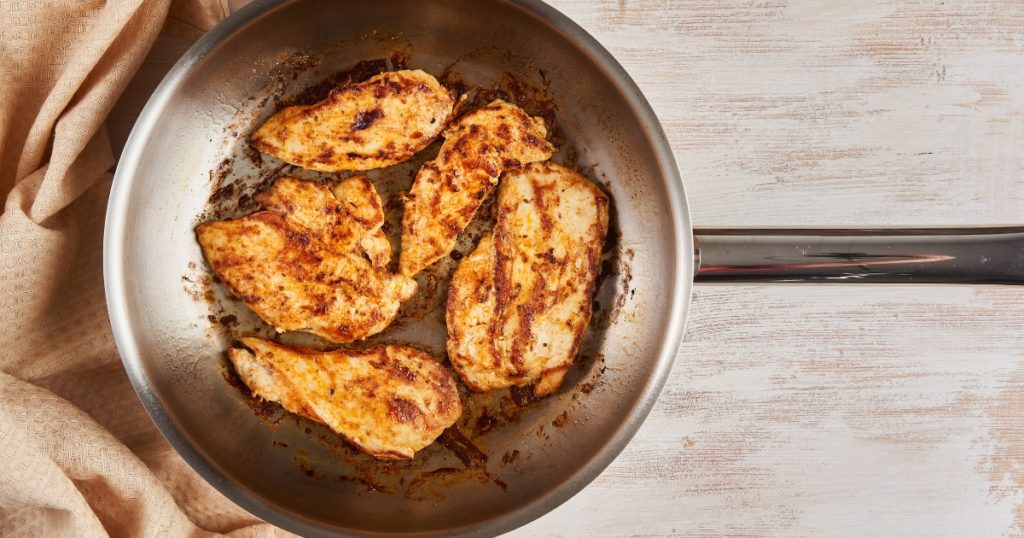
Fried chicken is the ultimate go-to for us busy moms. In fact, because it’s pretty fast and convenient to make, it’s a lifesaver!
Think about it; you can:
- Marinate chicken pieces with simple pantry staples like soy sauce, calamansi, and a bit of garlic, then use a pan or airfryer to achieve crispiness in an hour or less; or
- Get some already breaded chicken from the grocery, pop it in the oven toaster, wait, and eat fried chicken!
In short, fried chicken is always there to save the day, especially on those lunches or dinners when you can’t really think of what to cook.
Reason 2: Fried Chicken Is Easy To Access

Fried chicken is practically everywhere here in the Philippines. Even street vendors have their own version. There’s just something about the taste of this deep fried goodness, I guess.
And that’s the great thing: it’s so common, you can get it anytime, anywhere, whether you’re at home and not wanting to cook, or on the road, and you’re looking for some delicious food. Admit it: you already have favorite fried chicken spots, such as one that has a secret mix of herbs and spices which makes it finger lickin’ good!
Reason 3: Practically Everyone Loves Fried Chicken

Who can resist fried chicken? No one, that’s for sure! Even the pickiest of eaters can’t resist this particular fried food. It’s the one dish that will bring smiles to everyone at the table.
Reason 4: Science Backs Me Up!
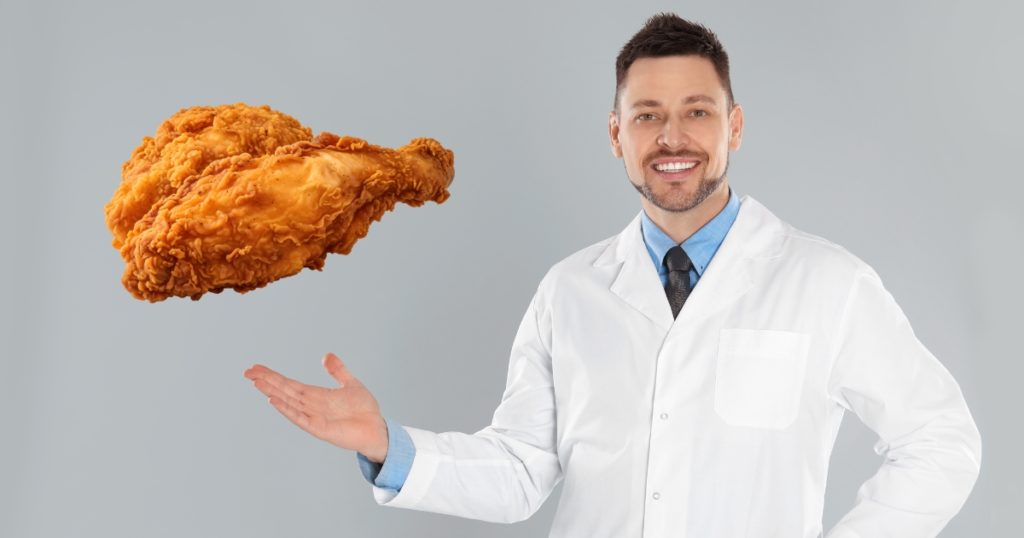
Did you know that even science explains why fried chicken tastes are irresistible? It’s all about the chemistry of fried food, also known as the Maillard reaction. It gives fried chicken the tempting golden color and mouth-watering flavor. This reaction creates a variety of flavor compounds, making each bite a complex taste experience.
But there’s more: the texture! The contrast between the crunchy outside and the juicy inside is scientifically proven to delight our taste buds. Studies show that this texture contrast not only pleases our palate but also makes us crave more. So, when we’re enjoying that crispy, juicy chicken, we’re actually delighting in a culinary marvel of science—cool, huh?
Reason 5: Fried Chicken Is Comfort Food

There’s an undeniable comfort in a good piece of fried chicken—there’s warmth and satisfaction that comes with every bite. The symbolism of fried chicken is a taste of home, no matter where you are.
And if you think about it, fried chicken is so delicious, but there’s more! Each crunchy bite reminds us of festive family celebrations, lazy Sunday lunches, and those impromptu gatherings that turn into cherished memories. It’s more than just food; it’s a comforting embrace, a reminder of happy times, and a simple pleasure that connects us to our loved ones and our roots.
Reason 6: It Goes With Everything

One of the best things about fried chicken is its incredible versatility. Whether it’s paired with rice, crispy fries, waffles, or if you want to use it as the meat for your sandwich, chicken just simply goes with everything!
Fried chicken also even fits into all kinds of meal settings. It’s a hit at a fancy dinner party, just as much as it is during a summer barbecue. No matter the occasion or the time of day, fried chicken is always welcome to the table.
Reason 7: Fried Chicken Is Very Versatile
Why do I love fried chicken? One more reason is it’s because it’s very versatile! You can enjoy the classic chicken taste, or go spicy, sweet, sour, and more. It’s always fun to play around and create your version of this beloved dish.
Let’s not forget the endless possibilities of flavors and marinades. You can go from a simple garlic and soy sauce marinade to a more adventurous coconut milk and lemongrass blend. The possibilities are endless!
Final Thoughts
So there you have it, my fellow Filipino moms! Fried chicken is more than just a dish; it’s a part of our culture, a comforting presence in our lives, and a reason to come together and celebrate. Here’s to more crispy, juicy, delightful moments – one piece at a time!
Love fried chicken? You’ll love this class!
As passionate about fried chicken as I am? Want to experience delicious fried chicken with those commercial tastes you love? Want to take your food business to the next level?
Well, you can do all that with the latest class here at The Bailiwick Academy by Chef Anthony Ang: Fry ‘Em Up: Pinoy Style-Fried Chicken!
This isn’t just any cooking class. It’s a golden opportunity to recreate the iconic flavors of famous Filipino fast-food fried chicken. Imagine mastering the art of making Whole Fried Chicken, Classic Chinese-style fried Chicken, and the crowd-pleaser, Famous Fast Food Fried Chicken—all of them tasting like some of those commercial chickens you love, or even better!
There’s a bonus too! You’ll learn the secret behind making super delicious garlic fried rice that pairs perfectly with these crispy delights.
Whether you’re a home cook looking to wow your family or an aspiring entrepreneur ready to cater to your clients’ discerning tastes, this class might be the one you’re looking for. Don’t miss out on this finger-licking opportunity—sign up at The Bailiwick Academy today and enroll in this class to elevate your fried chicken game!
—
Keep coming back to The Bailiwick Academy blog for more baking and cooking tips, kitchen tricks, and much more!
]]>Well, reading this blog is your chance to satisfy that curiosity. Keep on reading to know more about dim sum, like its origins, and discovering the variety it offers beyond our beloved siopao and siomai.
Ready to embark on this tasty journey? Let’s begin!
So what is dim sum, exactly?
Dimsum or dim sum, a term that resonates with “a touch to the heart,” is a traditional Chinese cuisine (mainly Cantonese cuisine, although other Chinese cuisines have their own form of dimsum) that consists of a variety of small, savory and/or sweet dishes, ranging from dumplings to buns, and rolls to cakes. Think of it as being similar to Spanish tapas or Filipino salu-salo—the dishes are shared among family and friends. Traditional dim sum is a brunch meal, usually enjoyed with tea (yum cha).
Thankfully, a modern dim sum meal doesn’t necessarily need you to drink tea (good news for those non-tea lovers out there). Eating dim sum doesn’t also have to be restricted to brunch; you can have dimsum for lunch, dinner, or even merienda.
What are the origins of dimsum?
Like with many delicious treats (i.e. the opera cake), the origins of the dim sum dish have plenty of versions, such as:
- The first written reference to the “dim sum” was during the Tang dynasty, where it was used to mean “barely fill the stomach.” However, dim sum was common all the way back in the Song dynasty (960–1279) in China—royal chefs were tasked with creating new varieties of small dishes.
- Some believe that dim sum originated in tea houses along the Silk Road as long ago as 2,500 years ago as a light accompaniment to special appetite-stimulating teas given to travelers
- One more story is that the Cantonese dim sum culture started in tearooms in the latter half of the 19th century in Guangzhou, the capital of Guangdong. Silk Road travelers and traders would take breaks in tea houses and eat dim sum. The practice eventually spread and became popular, especially in Hong Kong.
Whatever the true origins of dimsum, we’re glad it exists, and that there are plenty of dim sum restaurants to get our fix, agree?
What are typical dim sum dishes?
When you order dimsum from a dim sum restaurant, you’ll get a variety of small food plates and/or bamboo steamers. You can get steamed dishes or fried or baked ones. Here are some popular dim sum dishes.
Savory Dim Sum
Gao
These are dumplings wrapped in thin skin, filled with ingredients such as meat, vegetables, and/or seafood.
Siu Mai
Siu mai or siomai for us Pinoys are dumplings with a pork and cabbage filling, often served in steamed or fried versions. We’ve also made variations like beef and chicken siomai.
Har Gow
These translucent, pleated shrimp dumplings are a test of a chef’s skill – delicate and flavorful.
Char Siu Bao
Barbecued pork buns in English. These are steamed buns filled with a mixture of pork, vegetables, and other ingredients, often topped with a BBQ sauce. Think of them like our asado rolls.
Cheong Fun
Rice noodle rolls that are steamed and have various fillings. They’re akin to lumpiang sariwa, but with a softer, silkier texture.
Sweet Dim Sum
Custard Buns
These are steamed buns with a creamy, sweet custard filling. The filling is usually a rich, eggy custard, offering a delightful contrast to the soft bun. They’re a favorite for their indulgent and comforting taste.
Egg Tarts
Also known as egg custard, these are sweet tarts with a flaky pastry crust and a creamy, custard-like filling. They are a staple in many dim sum restaurants. People love them for their rich, sweet flavor.
Mango Pudding
A refreshing and fruity dessert, mango pudding is smooth and creamy, often served chilled with a topping of fresh mango pieces or a light cream.
Sesame Seed Balls
Known locally as buchi, these chewy, deep-fried sesame balls are coated with sesame seeds and usually filled with sweet red bean paste. They have a crispy exterior and a soft, sweet interior.
Almond Jelly
Often served with fruit, this jelly is mild in flavor and made with almond milk or extract. It’s a subtle dessert for those who prefer less sweetness.
Do note that dim sum is not limited to these dishes, as there are over one thousand varieties of dim sum. Check out Dimsum 101 and Dimsum 102 here at The Bailiwick Academy for more specific examples.
What’s the best way to enjoy dimsum?
Want to fully savor dimsum? Here are some tips to keep in mind!
- Enjoy the flavors slowly, especially with complex dishes like xiao long bao (soup dumplings). Let the soup inside cool a bit before taking a bite.
- High-quality dim sum is usually well-seasoned. Therefore, additional sauce might not be necessary, even if we Pinoys can’t help putting soy sauce. If needed, add a small amount of soy sauce or chili and adjust to taste.
- Use chopsticks to hold the dim sum and take smaller bites, allowing the food to cool down. Some items, like shrimp dumplings, you can finish in a single bite.
- The communal nature of sharing various dishes makes dim sum a social and enjoyable experience, best enjoyed with family or friends. Of course, there’s no one to stop you if you want to enjoy dimsum by yourself!
- Embrace the variety of dim sum. Mix steamed, fried, and baked items, including classics and more adventurous choices.
- For fun, eat dim sum the traditional Chinese way: with tea! Plus, it does aid your digestion.
- Begin with lighter, steamed dishes before moving to heavier, fried items to appreciate the subtle flavors.
- Mind dim sum etiquette. Use communal chopsticks or serving spoons for sharing, pour tea for others first, and tap the table to thank someone who pours tea for you.
Enjoy dim sum the Filipino way!
For us Pinoys, we love to eat almost everything with rice, even our sweets like kakanin! And guess what? You can easily enjoy dim sum with rice too—even without going to any dimsum place.
Thanks to Chef Allan Mertola’s new class, Dimsum Rice Toppings, it’s now simple to bring these tasty dim sum flavors to our everyday rice meals at home.
In this class, you can make nine different kinds of rice toppings:
- Chicken Mushroom
- Pork and Shrimp
- Pork Ribs with Tausi
- Spicy Asado Squid
- Shanghainese Dumpling
- Pork Scallop
- Chinese Kikiam
- Beef Ball
- Crispy Prawn Dumpling
And even get a bonus recipe for Yang Chow Fried Rice to make your dimsum with rice experience really special! If your family loves dim sum food, this class will surely make you a superstar in their eyes!

It’s great for business as well. As we said above, Pinoys LOVE Chinese food!
Ready to add some sizzle to your everyday meals or food business? Sign up at The Bailiwick Academy, enroll in this class, and watch the magic happen!
—
Keep coming back to The Bailiwick Academy blog for more baking and cooking tips, kitchen tricks, and much more!
]]>

 (@hawaiifoodreviews)
(@hawaiifoodreviews)